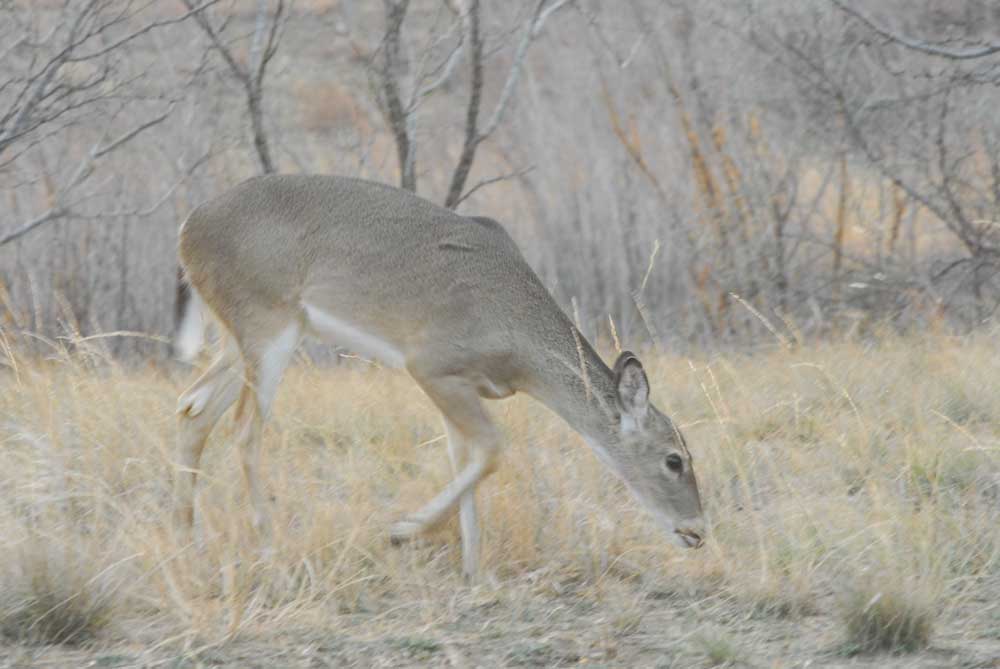Deer Me: Expanding Doe Days Even More Could Add More Opportunity
Published 2:21 am Saturday, December 10, 2022

- Hunters in Texas’ Post Oak and Pineywoods regions will have more chance to take a doe with doe days being extended from opening day until the Sunday after Thanksgiving. (Steve Knight/Tyler Morning Telegraph)
It was an 11th hour invitation to hunt a doe. Eleventh hour because like the remainder of the Post Oak Savannah counties the antlerless season in Smith County ended on Nov. 20 and I was out there in the waning hours of the closing day.
It could have been worse, however. The antlerless season used to last four days. Before that it used to require a state-issued doe permit which were as rare as hen’s teeth.
Trending
Those last scenarios came at a time when deer were a rarity in eastern Texas.
That is not the situation anymore. Deer numbers may not be as high as in the Hill Country, which is a good thing, but they are in good enough shape and growing that the Texas Parks and Wildlife Department opted to expand to 16 doe days in part of the Post Oak region in 2017 and the remainder in 2019.
The expansion was not a sure thing as there remains a segment of landowners and hunters opposed to doe hunting. The most common comparison is removing mommas out of a cattle herd when that really is not any comparison.
The expansion came with two safety nets, a two-doe limit and the special season closing by Thanksgiving weekend when hunting activity spikes.
While other portions of the state with larger deer populations have a five-deer limit, hunters in the Post Oak are restricted to four, and are hamstrung with antler restrictions and the short doe season.
As my last day, last afternoon hunt wound down unsuccessfully I wondered why I could not get up and try again the next morning. After all what is more important, the number of deer I harvest or the timeframe in which they are harvest.
Trending
It turns out it is a little of both. The Post Oak region consists of 31 counties ranging from east-central Texas north to the Red River. It is a diverse region with some areas having more habitat and deer than others. In other words it is not a one-size-fits-all kind of region.
“It was probably a combination of biological and social regulations. The thought was as we made the progression from four to 16 days, that was a pretty big jump. I think the thought was to go incrementally, kind of project what people would harvest,” explained Roger Wolfe, TPWD regional wildlife biologist over the Post Oak region.
With a growing deer population and increased hunter numbers across the region the annual deer harvest has been increasing. In 2015-16, the year prior to the expanded doe days, 94,000 hunters took an estimated 32,000 bucks and 25,000 does. Last year the numbers were 50,000 and 39,000, while hunter numbers climbed to 107,000, according to TPWD. Percentagewise the antlerless harvest was about 44% of the total harvest each year.
Wolfe said even with a two-doe limit there is a concern for overharvest on smaller properties where a landowner may allow multiple hunters to come in. That could in turn impact deer numbers on adjoining properties.
There have been some counties where landowners feel deer numbers have declined since the doe days expansion took place. However, what is not known is if that is a perceived decline, whether doe are less likely to come to feeders as they become wary of hunting pressure, whether it is impacted by native food sources, weather change, habitat decline or in fact too many doe have been taken.
Simply put overharvest is counterproductive to hunters. If a group is attempting to load up on the harvest on one property the negative impact is more likely to hurt them more than others as they chase deer to adjoining properties.
In expanding the doe season TPWD did consider whether hunters would take more deer with extra days to hunt. Except under heavily managed situations, most hunters want to take a buck before shooting a doe. Some may never pull a trigger on a doe, choosing instead to wait until the last hour on a buck. Others wanting meat may take a doe sooner, but for the most part deer hunting is a self-limiting activity. Most hunters only take a single deer because they do not have freezer space for more than one or just do not want that much venison.
So does it biologically make a difference if a hunter takes a doe on the first day or the last day of the season, and the answer appears to be no on the grand scheme. So why not extend doe days to run through the regular season closing day? It would allow hunters, including youth more opportunity through the Christmas holidays.






